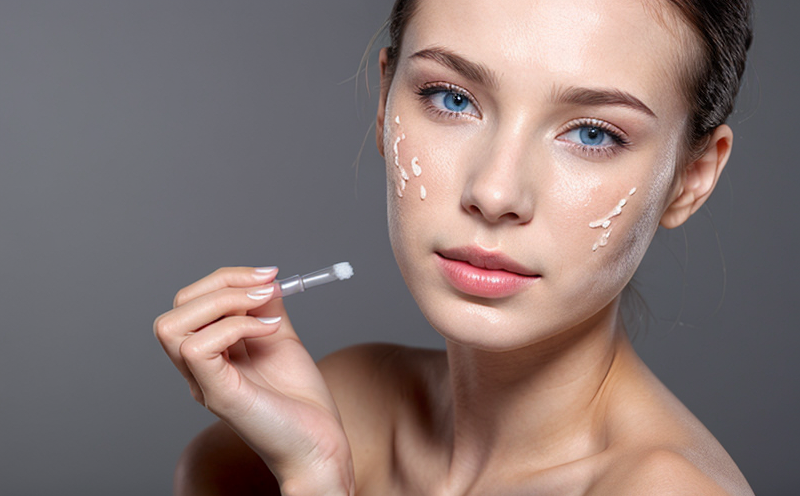Sensitization Testing for Hair Dyes in Cosmetics
Understanding hair dye sensitization is crucial for ensuring product safety and regulatory compliance. Sensitization testing plays a pivotal role in identifying potential allergenic reactions to chemical compounds found in cosmetic products, particularly hair dyes. This service assesses the likelihood of an individual developing an allergic reaction upon repeated exposure to certain ingredients.
Typically, sensitization occurs when an individual is exposed to a substance multiple times over time, leading to the immune system recognizing it as harmful and producing antibodies against it. Hair dye sensitization testing identifies whether a particular hair dye can trigger this type of allergic response in consumers. This service supports cosmetic manufacturers by ensuring their products meet stringent safety standards and comply with regulatory requirements.
The process involves exposing subjects to small amounts of the active ingredients in hair dyes under controlled conditions, then monitoring for any signs of an immune response. This testing is essential not only for protecting consumer health but also for maintaining a positive brand reputation and avoiding product recalls or legal issues.
Regulatory bodies like the European Union Cosmetics Regulation (EC 1272/2006) mandate that all cosmetic products undergo safety assessments, including allergen identification and potential sensitization risks. This service helps manufacturers comply with these regulations by providing robust data on product safety.
The testing procedure involves several steps:
- Ingredient analysis to identify potential allergens
- Formulation of test products using the identified ingredients
- Application of the hair dye formulation onto volunteers or in vitro models
- Monitoring for allergic reactions over a specified period
Scope and Methodology
| Parameter | Description |
|---|---|
| Test Subject | The test involves volunteers who have no known history of sensitization to the hair dye components. |
| Exposure Duration | Subjects are exposed to the hair dye formulation for a period ranging from 24 hours to 7 days, depending on the specific test protocol. |
| Observation Period | An additional observation period of up to 168 hours following exposure is conducted to monitor any delayed reactions. |
The methodology strictly adheres to international standards, such as ISO 10993-4:2015 and IEC 62760:2018. These guidelines provide a framework for conducting sensitization tests that ensure consistency and reliability across different laboratories.
| Instrumentation | Description |
|---|---|
| Skin Irritation Tester | A machine designed to apply the hair dye formulation onto the skin and monitor for any adverse reactions. |
| Observation Chamber | A controlled environment where subjects are monitored during and after exposure to the hair dye. |
Benefits
By conducting sensitization testing for hair dyes, manufacturers can:
- Evaluate the safety profile of their products before market release.
- Avoid potential legal and financial risks associated with product recalls or lawsuits due to allergic reactions.
- Promote transparency and trust with consumers by ensuring safe products.
- Ensure compliance with international regulatory standards, such as the EU Cosmetics Regulation.
Industry Applications
Sensitization testing for hair dyes is widely used in:
| Application | Description |
|---|---|
| New Product Development | Identifying potential allergens early in the product development process allows for safer formulations. |
| Regulatory Compliance | Maintaining compliance with international standards such as ISO and EU regulations is crucial for market entry. |
This testing service is particularly beneficial for:
- R&D teams seeking to innovate safer hair dye formulations.
- Quality managers aiming to ensure product safety and maintain brand reputation.
- Compliance officers responsible for ensuring regulatory compliance.





